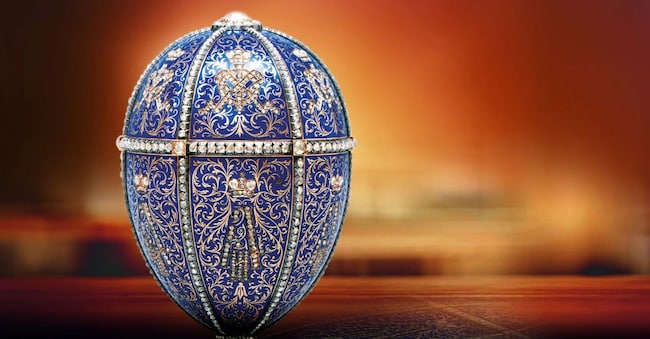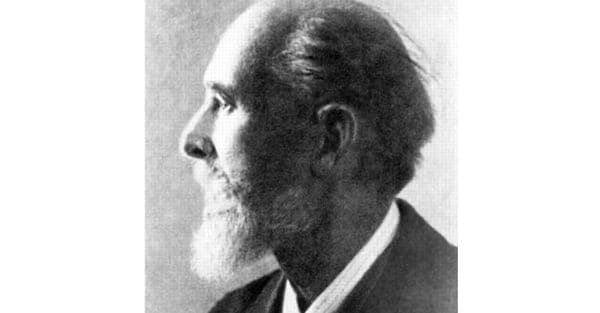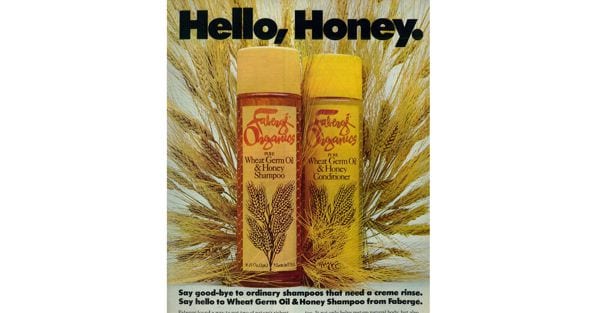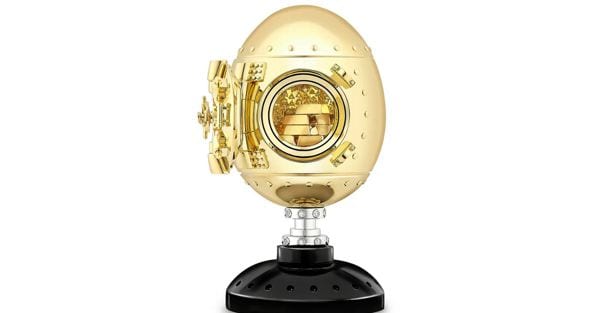Fabergé: A tortuous story of tsarist eggs, perfumes, and household cleaning products.


Imagine Cartier-branded household cleaning products or aloe vera shampoo with the Boucheron logo. What might be a dream for some would certainly be a nightmare for fashion houses, which would see their heritage and history associated with less-than-exclusive categories. Yet, this is exactly what happened in the second half of the last century to Fabergé, the jewelry brand famous for the precious eggs beloved by the tsars, which was recently sold for $50 million by the last of its many owners, the mining company Gemfields, to a US venture capital fund —just the latest installment in its long, mostly glorious, sometimes sad, and sometimes bizarre history.
Not all major jewelry houses have had a linear and coherent history: Cartier, Bulgari, Damiani, but also Chaumet and Van Cleef & Arpels often remained in the hands of the founding family for long periods – some still are, as in the case of the Valenza maison – before being passed on to large luxury groups such as LVMH, Richemont (which built the heart of its portfolio with jewelry and watches) and, to a lesser extent, Kering.
The story of Fabergé is different, especially because at the height of its international success, when even Europe's royal and imperial families vied for its creations, it was interrupted and in some ways devastated by the Bolshevik Revolution of 1917, which confiscated its assets and businesses. Thus ended a glorious journey that had brought to fame Peter Carl Fabergé, son of founder Gustav, himself a descendant of the goldsmith Pierre, who had moved from Germany to the Baltic province of Livonia, then part of the Russian Empire, and then opened his boutique in 1842 at 12 Bolshaya Morskaya in opulent St. Petersburg. It could be said that the Fabergés had travel, the movement, in their DNA, ever since the original Huguenot family was forced to leave France at the end of the 17th century, following the revocation of the Edict of Nantes, by which Henry IV had guaranteed freedom of worship for Protestants.

Peter Carl Fabergé, who led the maison during its heyday
In St. Petersburg, between 1882, when Carl Fabergé took over his father's business, and 1917, it is estimated that the house produced at least 200,000 pieces of gold and jewelry. With 500 employees and shops in Moscow, Odessa, Kiev, and London, it was one of the largest Russian companies. Let's go back to the Revolution: by an ironic twist of fate, just as it had befallen his ancestors, and after seeing management of his company passed to a committee of employees, Carl Fabergé was eventually forced to cede ownership to the state and flee to Europe, where he died in Lausanne in 1924. Two of his sons, having managed to escape Russia, refounded the house in Paris as Fabergé & Cie, which traded and restored objects made by Fabergé, marking them with the Fabergé Paris hallmark so as not to be confused with those still being produced in Russia.
It is from this confusion that, through very devious channels, another branch, and the most bizarre chapter, of Fabergé arose. In the 1920s, an American oil magnate, Armand Hammer, purchased many Fabergé objects in Russia, including some of the famous imperial eggs. In 1937, his friend, Samuel Rubin, who owned the Spanish Trading Company, a cosmetics importer in Spain, was forced to close its doors by the Civil War. It was Hammer who then suggested he found a new cosmetics brand: why not call it Fabergé? The expatriate Fabergés knew nothing of "Fabergé Inc."—the name of the new company—until the end of World War II, by which time the brand had had time to consolidate and expand. In a legal settlement that earned them a reimbursement of approximately $300,000 in today's dollars, they granted Rubin permission to use their surname only to associate it with a rather luxurious line of perfumes.

An advertisement for Fabergé Organics shampoo from the 1970s
But that wasn't the end of it: after further divestments, and over a twenty-year period in which even Cary Grant and Roger Moore joined the company's board, and Fabergé also became a film production company under the name "Brut Productions," named after its most famous perfume (which also financed the Oscar-winning film "A Touch of Class" in 1973), Fabergé Inc. was sold for $700 million to Elizabeth Arden in 1987. Two years later, the company was purchased with all its assets by Lever Brothers (the future Unilever) for $1.55 billion, who began using the brand name for household cleaning products as well. As can be read on the Fabergé website today, at the time, the brand appeared on a "range of household cleaning products for use in bathrooms, clogged drains, kitchen and bathroom cleaners, and washing machines."
The nadir of this glorious history had been reached. And from there, Fabergé could only rise. 2007 began with the news that the mining company Pallinghurst Resources had purchased the entire, sprawling Fabergé license portfolio from Unilever for approximately $140 million. Thus was born the company Fabergé Limited, registered in the Cayman Islands. The company, also rebuilding relationships with Carl Fabergé's great-granddaughters, Tatiana and Sarah, who had been appointed heads of the new Fabergé Heritage Council, aimed to bring the brand back to its birthplace.
It began by associating it with ethically mined gems from the Pallinghurst mines and continued with the launch of the first fine jewelry line in 2009, almost a century after the last one, and reopening stores in the world's most important cities. Then, in 2013, another mining company that wanted to focus on ethical gems, the British Gemfields, acquired Fabergé, reviving its jewelry production with conviction. Over time, the famous eggs returned, no longer designed for the tsars but for today's stars: the one dedicated to Goldfinger, the one for Beetlejuice, designed in collaboration with the film's director, Tim Burton, with prices on request, while the more "affordable" ones start at €57,000.

The egg created for the 60th anniversary of the film "Goldfinger"
Last August 12th, however, Fabergé's long and winding journey, which seemed to have finally found peace, resumed when Gemfields sold its assets to the venture capital fund SMG Capital for $50 million to finance its core business and expansion into Africa. Leading the fund is entrepreneur Sergei Mosunov, a tech enthusiast. Of Russian origin, just like Fabergé, he's waiting to see where the story will take him next.
News and insights on political, economic, and financial events.
Sign upilsole24ore




